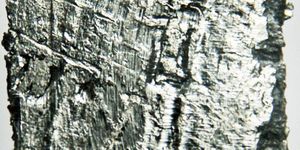New research published in Bioorganic & Medicinal Chemistry Letters demonstrates the ability of small molecules to block a protein that aids the spread of Ebola. While still in the early phase of development, these compounds could one day be used during an outbreak to halt the dissemination of the disease as well as to treat infected patients.
The devastating outbreak of Ebola virus disease (EVD) between 2013 and 2016 in West Africa caused the death of over 11,000 people. A clip from the New York Times, above, is a report about the crisis from September 2014. Attention was drawn once again to the virus, and efforts to develop resources to combat it began with urgency. While there are vaccines in development, they are protective and only work to keep a person from getting Ebola; as such they leave people vulnerable to other hemorraghic viruses.
These new compounds would not be dangerous to host cells. Instead it would work on the replication machinery of the virus.
Viruses take over the cellular machinery of the host for its own purposes. The host cells replicate the virus, and viral particles are subsequently released from the cell which leads to the infection of more cells.
The compounds target the association of the virus with the host cells, and prevent the newly produced Ebola viruses from exiting the cell; all that happens without toxicity to the host.
"Positive results showing potent viral inhibition without toxicity to normal healthy cells may lead to a paradigm shift in the search for better antiviral drugs,” explained Dr. Harty of the University of Pennsylvania School of Veterinary Medicine, one co-author of the study. “Importantly, as these virus-host interactions represent a common mechanism used by a range of RNA viruses, we predict that this virus-host interaction may represent an Achilles' heel in the life cycle of RNA viruses."
The mechanism that the virus uses to escape cells is similar to many other RNA viruses such as Lassa fever and Marburg virus. The model of the virus-host interactions that was used is between the VP40 protein of Ebola and NEDD4, a host protein. 4.8 million compounds were screened in silico to identify one that prevented VP40-NEDD4 interactions, thus preventing virus escape.
Harty’s team collaborated with Dr. Jay Wrobel of Fox Chase Chemical Diversity Center to analyze some commercial compounds. That led to the identification of even more potent molecules. Taking it a step further, new compounds were made to optimize efficacy. Thus, a new class of molecule targeting filovirus egress was created.
"We postulate that emergency administration of such an antiviral therapeutics during an outbreak would inhibit virus dissemination and spread in infected individuals, thus slowing disease progression and allowing the immune system more time to mount a robust response to effectively combat and clear the infection,” explained Wrobel.
The team hopes to continue work on finding the best molecule, which would then be tested on viruses. If that shows success, the testing would move to animal models before clinical trials. "This work is exciting to me since it may translate our basic science work into a potential product or therapeutic," Dr. Harty concluded.
Sources:
AAAS/Eurekalert! via
Elsevier,
Bioorganic & Medicinal Chemistry Letters









